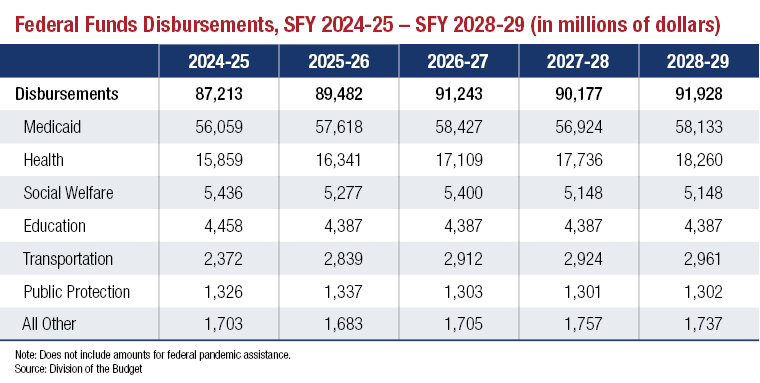Comptroller Cites Risks, Concerns With Gov. Hochul’s Budget Plan
ALBANY—Gov. Kathy Hochul’s proposed budget is now getting the fine-tooth comb analysis from New York State Comptroller Tom DiNapoli. On Feb. 14, he identified the risks and concerns of her budget, noting ways to improve the state’s structural imbalance that may be needed to bolster the state’s rainy-day fund.
His report noted that cumulative outyear budget gaps projected by the Division of Budget have increased to a total of $27.3 billion through State Fiscal Year (SFY) 2028-29 and state spending is projected to rise at a rate that outpaces revenues.
“Uncertainty over federal funding and the ending of federal pandemic aid create an urgent need to strengthen the state’s fiscal position,” he wrote.

“Federal funding provides the backbone of the safety net and funds for a wide array of essential services, including health care, education, transportation and clean water programs.”
He pointed to potential cuts and significant policy changes in Washington that could have a large impact on the state’s finances and on New Yorkers’ quality of life. He called for preserving state services and maintaining long-term budget balance through “a careful examination of the state’s spending trajectory on major programs in ways that do not harm services but ensures their long-term fiscal viability.”
The DOB projects All Funds spending in SFY 2025-26 to total $252 billion, an increase of $8.6 billion, or 3.6%, compared to updated projections for SFY 2024-25. State Operating Funds (SOF) spending is expected to grow by $10.5 billion, or 7.9%. General Fund (including transfers to other funds) spending is expected to grow by $7.9 billion, or 7.3%.
President Trump has issued several executive orders with implications for federal funding. As Congress works on the federal budget, there may be additional and significant changes to laws and rules affecting the economy and eligibility and the level of state funding, directly or indirectly, for programs that provide support and assistance to New Yorkers. Any such changes could negatively affect the state’s finances and the finances of New York households, the report warned.
The Executive Budget does not include any contingency measures for any potentially adverse federal action. In the event of federal cuts, the state may choose to cut programs or services or to increase state-sourced funding to maintain services; however, it does not have the taxing capacity to replace federal spending in total, especially in health and social services. Furthermore, short-term use of reserves cannot solve for a restructuring of the federal-state relationship regarding key programs, Mr. DiNapoli said.
